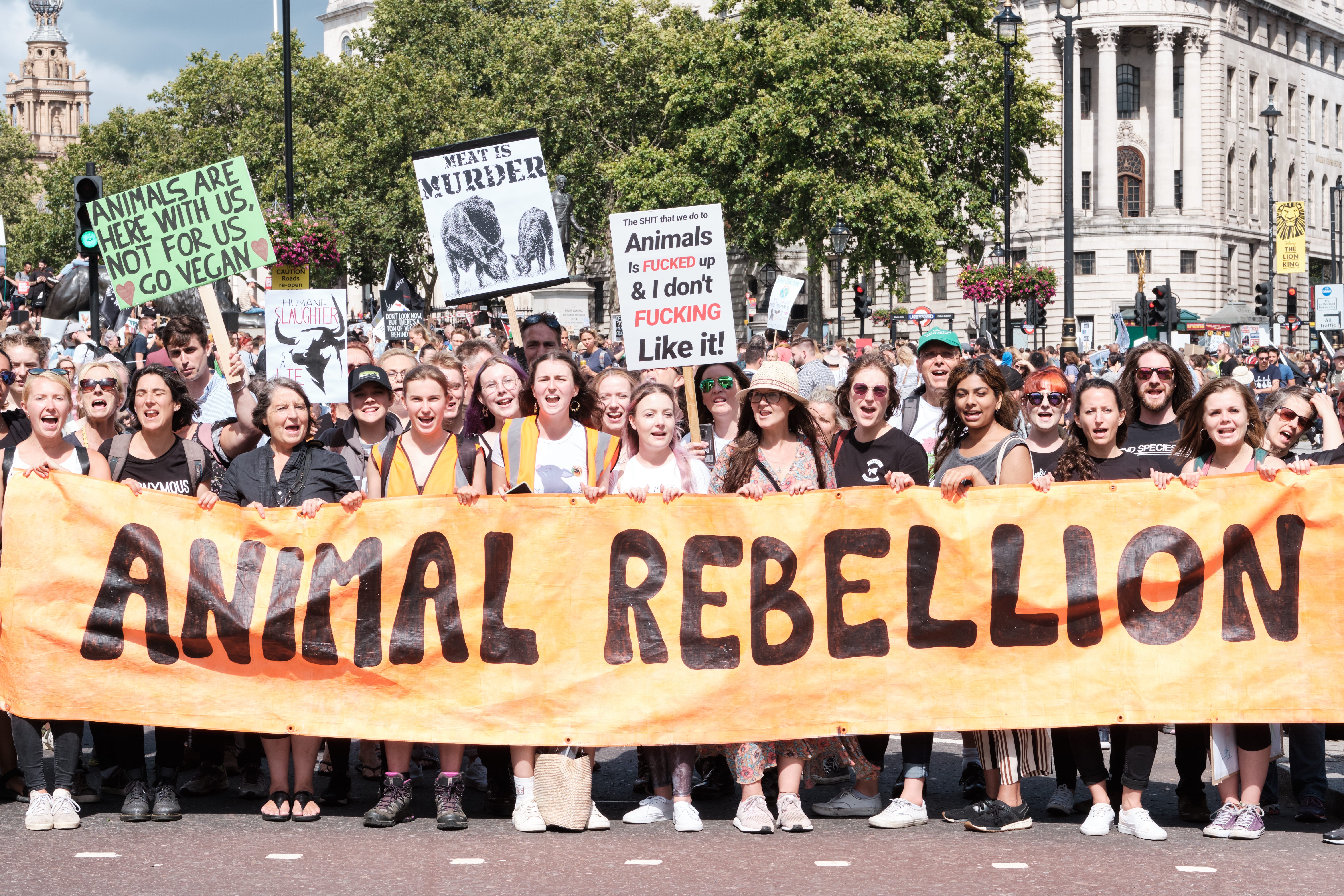*Originally published 13 September 2019*
When I ask myself what it means to stand in true solidarity with the trillions of our animal kin whom we exploit and kill for food every year, all of whom want to live, all of whom resist their oppression every day, I look to the ways in which past successful social movements have created transformational change in society.
The ecology of social movements
What I have learned is that successful movements have involved different individuals, groups and organisations working to make change in different ways, through: individual change, creating alternatives and changing the dominant institutions that shape society. This is why social movements are often referred to as ‘movement ecologies’.
In the animal justice movement examples of individual change include veganism and animal advocacy. Examples of creating alternatives include sanctuaries, vegan businesses and veganic farms. And examples of the dominant institutions that shape society that we need to change include governments bodies, corporations, polices and legislation i.e. structural change. We can work for structural change from both inside and outside the system. The ‘inside game’ includes lobbying and party politics. The ‘outside game’ can mean either reforming the status quo e.g. through NGO campaigns for welfare reforms, or transforming the status quo through mass protest movements demanding transformational change e.g. legislation that abolishes the property status of other animals.
All of these approaches are needed. It is not enough to only focus on individual change, or on structural change. Change is needed on every level of society. These approaches, and the individuals, groups and organisations using them, can and must work in synergy with each other if we have any hope of building a movement that can create transformative change for and with other animals.
While all of these approaches are needed, as civil rights activist, trainer and social movement theorist Bill Moyer argued in his book Doing Democracy, each of them come to the fore at different stages of the movement cycle. Historically, successful movements have been catalysed by ordinary people coming together to refuse to cooperate with unjust systems, take direct action through mass protest and civil disobedience, and make personal sacrifices to force the injustice they are fighting against out into the public consciousness and inspire others to take action with them. In this way they have been able to shift public opinion and force politicians to take stands on issues they would rather have avoided.

Animal Rebellion
We have an opportunity to catalyse a powerful mass movement for animal justice in a profound and meaningful way through Animal Rebellion. Animal Rebellion is a new, mass volunteer movement that recognises that the climate and ecological crisis we are facing is one that affects us all, humans, other animals and the planet. It is based on the understanding that our exploitation of other animals, our oppression of humans and our destruction of the natural world are all entangled, that they all enable and compound each other. While it stands in solidarity with Extinction Rebellion and the broader ‘Rebel Alliance’, and shares the same demands and theory of change, Animal Rebellion also recognises that we cannot address the climate and ecological emergency without addressing the animal emergency. Amongst other things, this means telling the truth about the animal farming and fishing industries being leading contributors to the climate emergency, ending these industries and transitioning to a sustainable and just plant-based food system.
Momentum-driven organising
Like Extinction Rebellion, Animal Rebellion is using momentum-driven organising to build a mass movement that has the power to shift public opinion and achieve transformative change. Momentum-driven organising draws on lessons from the field of civil resistance and from past social justice movements, such as the Indian Independence movement and the Civil Rights movement. In this model of organising, escalating non-violent direct action is used to create momentum and inspire people to take action. This momentum is then absorbed through a strong movement organisation which has a decentralised structure that enables people to act autonomously in line with the movement. The absorbing of momentum increases active popular support and carries on this ‘cycle of momentum’, continuously building the power of the movement. The ultimate aim is to generate the sustained and active support of 3.5% of the population. This 3.5% figure is based on the work of Chenoweth and Stephan in their book Why Civil Resistance Works. They analysed over 300 national level campaigns over the past century and found that no campaign failed once it had achieved the active and sustained participation of 3.5% of the population and many succeeded with much less. It is momentum-driven organising that has helped Extinction Rebellion grow exponentially and shift public opinion in such a short space of time. And it is momentum-driven organising which holds such promise for Animal Rebellion.
The first step
However, movements are built one campaign at a time. This is just the first step of this particular campaign and movement cycle, building on the many that have come before. It will be a long and arduous haul. We have much to learn about how to build a mass protest movement in an effective way, as well as the implications of being an ally movement. And like other movements, this is ultimately an inter-generational struggle, just as our life’s work is an inter-generational project. But right now I see no other option that can catalyse the mass movement we, and more importantly other animals, need to create meaningful structural change in society that will move the cause of animal justice forward. A huge part of this change is to shift our destructive, industrial, corporate-controlled food system to a plant-based food system which is sustainable and just for all.
Like many vegans I have spent many years focusing on individual change. But over the past few years I have come to realise individual change alone is not enough. So now when I ask myself what it means to stand in true solidarity with other animals, I increasingly believe that this requires ACTING in solidarity with other animals*. And to me this means reclaiming our individual and collective power by withdrawing our consent, cooperation and obedience from oppressive systems, taking direct action and demanding structural change.
I will be acting in solidarity with other animals and rebelling for all life with Animal Rebellion on the streets of London from October 7th.
Join me.
It’s time to rebel 💚✊🏽
*See also this excellent post by Christopher Sebastian McJetters on what it means to him to choose to ACT in solidarity with marginalised persons of all species.
